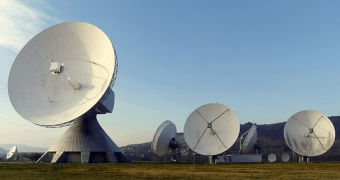
In December, the Telecom Regulatory Authority of India (TRAI) issued the Consultation Paper on Licensing Framework and Regulatory Mechanism for Submarine Cable Landing in India. Submarine cables are vital communication infrastructure of the digital age and critical to a data-driven economy; hence to address specific issues, DoT and TRAI have raised for stakeholder consultation through this paper. Broadband India Forum (BIF) has emphasized the need to promote competition, innovation, and investment in submarine cable landing stations and provide equal, fair, non-discriminatory and open access to all potential seekers of international connectivity through the consultation.
Also Read: BIF Welcomes Minimum Speed Definition of 2 Mbps for Broadband by Government
TV Ramachandran, President of BIF, speaking about the suggestions and their impact on digitalization, said, "Submarine Cable and Cable Landing Stations are critical elements to improve the Digital Communications infrastructure ecosystem, boost digitalization and accomplish the dream of creation of a digital economy. It's quintessential to create a conducive environment for the growth of Submarine Cable and Cable Landing Stations to support requisite infrastructure development to push Digital India mission. India is at a nascent stage of becoming a digital economy and it requires to accelerate its efforts. A light-tough regulation will play an instrumental role in promoting competition, encouraging innovation in the segment and fulfilling the data demand of every citizen."
According to the statement, the new framework proposed by BIF talks about the necessity of a new regulatory environment which delinks the deployment and ownership of the submarine cable networks from the submarine cable landing infrastructure through open access under a light-touch regulation.
Also Read: Broadband India Forum Appoints Former Telecom Secretary as Chairperson
Opening of CLS Facilities to New Entrants
In its response to the regulator, BIF has proposed opening CLS facilities to new entrants and implementing a regulatory framework with two main categories of players: those who build and deploy submarine cable systems and CLSs, and those who use the infrastructure to provide public services.
BIF has also expressed concerns about the potential negative impact of certain conditions outlined in paragraph 2.1 of the consultation paper, which could inadvertently create barriers to entry for new entities looking to build submarine cable infrastructure in India. This, in turn, may discourage significant, long-term investments in the sector.
BIF Recommends Simplifying Procedures
Furthermore, the think-tank has called for a review of the current regime to enhance the ease of doing business. BIF recommends simplifying procedures and processes, reducing turnaround time (TAT), implementing lawful interceptions and monitoring (LIM) standards, and allowing flexibility to adopt new technologies and models. These measures will boost investor sentiment, which is crucial in today's business landscape. Additionally, the think-tank has emphasized the significance of adopting the latest technologies, including Open Cables, which separate the wet and dry plant.
Also Read: Indian Undersea Cable Landing Stations Increased Capacity by 9x: Report
Atmanirbhar Approach
BIF Expressed concerns about Atmanirbhar approach, stating it may not be entirely practical as of now to follow the approach as it would lead to an unnecessary increase in deployment costs and other maintenance issues, impacting end consumer experience.















